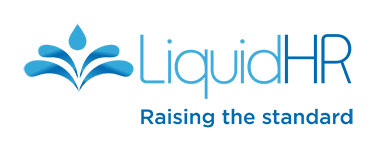Employee Onboarding: How to Set New Hires Up for Success
Employee onboarding in Australia is about more than forms and checklists. It’s a strategic process that helps new hires integrate quickly, stay longer, and feel supported from day one. In this guide, we’ll break down onboarding best practices, common mistakes, and what compliance looks like for Australian employers.
What Is Employee Onboarding?
Employee onboarding is the structured process of integrating new employees into your organisation.
It covers everything from completing documentation to learning company culture, tools, and role expectations.
Unlike a one-day orientation, onboarding is an ongoing journey that helps employees feel supported as they transition into their new position.
A strong onboarding process helps new hires become productive faster and creates a smoother experience for everyone involved.
1. Before Day One: The Pre-boarding Stage
The onboarding process starts before the first day.
Once an employee accepts the offer, keep them engaged with clear communication and preparation. The Business.gov.au hiring guide outlines key pre-employment steps and documents every Australian employer should have in place before day one.
What to do before day one:
- Send employment contracts and forms early.
- Provide access to essential systems or training platforms.
- Share a welcome message from the manager or team.
- Confirm start date, time, and first-day details.
This stage sets the tone and reduces anxiety for the new hire, showing them that your business is organised and supportive.
2. The First Day: Introductions and Essentials
A new employee’s first day should focus on connection and clarity.
Include the following on day one:
- A warm welcome and introduction to the team.
- A clear overview of the company’s mission and values.
- A workstation setup and access to necessary tools or software.
- Completion of mandatory compliance tasks, such as safety inductions and policy acknowledgements.
In Australia, employers should ensure new hires receive the Fair Work Information Statement, along with relevant onboarding documents. The Fair Work Ombudsman’s guide to starting a new job outlines employer obligations, including safety training, policy access, and required forms.
3. The First Weeks: Support and Feedback
Once the basics are in place, focus on helping new hires feel confident in their role.
Best practices for the first month:
- Schedule regular check-ins with their manager.
- Provide opportunities for shadowing or mentoring.
- Set short-term goals and review progress weekly.
- Encourage feedback about their onboarding experience.
Regular communication during this stage helps employees feel valued and supported, building engagement and trust early on.
4. Why Onboarding Matters
Effective onboarding benefits both employees and employers:
For employees: Faster confidence, stronger sense of belonging, and a smoother start.
For employers: Higher retention, stronger compliance, and improved performance.
Studies show that employees who feel supported during onboarding are 70% more likely to stay beyond three years.
A structured onboarding process is one of the simplest and most cost-effective ways to boost engagement and reduce turnover.
5. Common Onboarding Mistakes to Avoid
❌ Treating onboarding as a one-day event.
❌ Overloading employees with too much information.
❌ Skipping policy or compliance documentation.
❌ Failing to set up systems, tools, or accounts in advance.
❌ Not following up after the first week.
Addressing these gaps helps maintain a positive experience for both employees and managers.

Frequently Asked Questions
1. How long should employee onboarding take?
There’s no one-size-fits-all answer, but a good onboarding process typically lasts between 4 to 12 weeks.
This gives new employees enough time to understand their responsibilities, learn systems, and feel comfortable in the company culture.
The key is to provide structure without overwhelming them with too much information at once.
2. What should be included in an onboarding checklist?
An effective onboarding checklist should cover:
- Signed employment contract and payroll details
- Fair Work Information Statement
- Workplace Health and Safety induction
- Company policies (leave, conduct, IT, confidentiality, etc.)
- Job-specific training or shadowing
- Regular check-ins with the manager
Having a documented checklist ensures compliance and a consistent experience for every new hire.
3. Is onboarding a legal requirement in Australia?
While the process itself isn’t legally required, employers must meet several obligations when bringing new hires onboard – including:
- Providing the Fair Work Information Statement
- Ensuring Workplace Health and Safety training
- Meeting any award or agreement-specific induction obligations
Failing to do so can lead to compliance risks, especially for payroll or workplace policy breaches.
4. What’s the difference between onboarding and orientation?
Orientation is typically a one-time event, like a welcome session or office tour.
Onboarding, on the other hand, is an extended process that helps employees fully integrate into the company, understand expectations, and build long-term engagement.
5. How can employers improve their onboarding experience?
The best onboarding programs are proactive, personal, and continuous.
Some tips include:
- Assign a mentor or buddy for the first month.
- Provide training in small, structured steps.
- Check in regularly to identify any challenges early.
- Ask for feedback after 30, 60, and 90 days.
- Celebrate small milestones to boost motivation.
Need Help Managing Onboarding Policies?
Liquid HR helps businesses create structured, compliant, and engaging onboarding processes.
From employment contracts and documentation to culture-driven engagement strategies, we ensure new hires start strong and stay longer.











